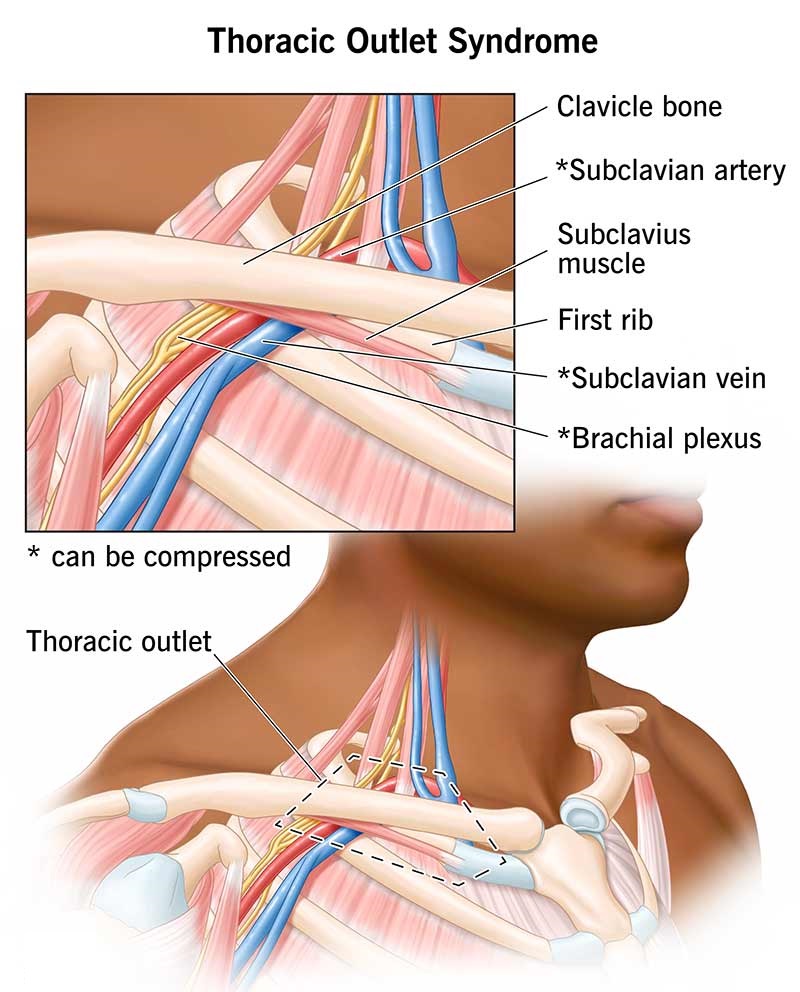Thoracic Outlet Syndrome Treatment
- Home
- Vascular Treatment
- Thoracic Outlet Syndrome Treatment

Thoracic outlet syndrome occurs when blood vessels or nerves in the space between your collarbone and first rib (thoracic outlet) become compressed. This can cause pain in your shoulders and neck and numbness in your fingers. Treatment may involve physical therapy to strengthen muscles and improve posture, or in severe cases, surgery to relieve pressure on the affected nerves or blood vessels.
Understanding Thoracic Outlet Syndrome Treatment:
Thoracic outlet syndrome (TOS) results from compression of nerves or blood vessels in the thoracic outlet, leading to symptoms like pain, numbness, and weakness in the affected arm and hand. This condition can be caused by anatomical abnormalities or repetitive strain injuries.
Managing Thoracic Outlet Syndrome:
Treatment for TOS focuses on relieving compression on the nerves or blood vessels. Non-surgical approaches include physical therapy to improve posture and strengthen muscles, ergonomic adjustments, and pain management techniques. In cases where conservative measures are insufficient, surgery may be recommended to alleviate pressure on the affected structures.
Vascular Surgeon in Vadodara (Rutvij Shah):
Consulting a vascular surgeon in Vadodara like Rutvij Shah is essential for individuals experiencing symptoms of thoracic outlet syndrome. Vascular surgeons are skilled in diagnosing and treating conditions affecting blood vessels and can provide comprehensive care tailored to managing TOS symptoms effectively.
-
What are the common symptoms of thoracic outlet syndrome?
Symptoms may include pain or numbness in the shoulder, arm, and fingers, along with weakness and decreased grip strength.
-
What causes thoracic outlet syndrome?
TOS can result from anatomical abnormalities (such as a cervical rib or tight muscles) or repetitive movements that compress nerves or blood vessels in the thoracic outlet.
-
How is thoracic outlet syndrome diagnosed?
Diagnosis typically involves a physical examination, imaging studies (such as MRI or ultrasound), and sometimes nerve conduction tests to assess nerve function.
-
Can thoracic outlet syndrome be cured?
While TOS is typically managed rather than cured, timely treatment can alleviate symptoms and improve quality of life significantly.
-
What are the treatment options for severe thoracic outlet syndrome?
Severe cases may require surgical intervention to release compressed nerves or blood vessels and restore normal function.
